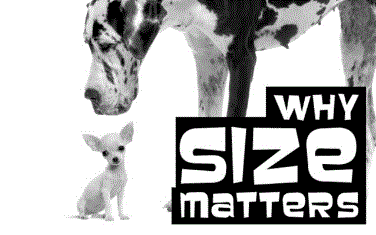Why Size Matters
In my 20 years trading in financial markets I watched my fellow traders both make and lose a lot of money on behalf of their clients. Often the same traders who would pull off a series of wins would be the same ones who soon afterwards suffered a massive loss.
In fact, of the 1,000 or so people I worked or dealt with over the years, I could probably count on one hand the number who had consistent returns.
And I wasn’t one of them.
Maths in Asset Management: Man and Machine
Several difficult conversations with clients made me think about the role that maths could play in aiding consistency and improving the relationship between asset managers and their Investors. So in 2011, I took a two year sabbatical to research this question.
One conclusion I ended up with came as a big surprise to me…
When it comes to asset selection, the human skills of a portfolio manager are very valuable.
My research showed that analysing which assets to invest in was rarely a pure mathematical exercise. Instead it involved characteristics only humans possess – skills such as intuition, relationship building and the sort of complex and un-definable pattern recognition that our brains are very good at.
But there is a caveat.
Trading: the Tale of Two Decisions
The second issue my research revealed is that selecting which stocks (or FX, Rates or Bonds! will go up or down is simply the first part of the money making equation. Just as important is the percentage of a portfolio you allocate to that decision.
In other words, the size of the trade matters way more than many traders and managers give it credit for.
Too Big or Too Small?
If the trade is too small you won’t get rewarded for your skill and insight. But if it’s too large, and you are wrong (there are always times when you will be wrong), you will lose too much. When this happens investors are likely to take away your mandate altogether.
When I witnessed a big loss it was usually because traders got the decision about the size of the trade wrong – not the decision about which asset to select.
That’s because those same human emotions that make us great at asset selection, can hold us back when it comes to knowing how much to allocate. Emotion and the act of buying or selling simply don’t mix.
And where human skills can help in asset selection, human emotion interferes in the sizing decision.
So what is the Optimal Size?
The final – and most important insight – my research showed was that there is always an optimal size for any investment. This can be worked out by properly understanding an investor’s risk profile and then applying advanced maths.
When you get this right, you don’t just get more consistent returns. Conversations between fund manager and investor become much easier: there are no surprises. Instead there is a direct link between the risk tolerance of the investor and the portfolio that the Asset Manager constructs on his/her behalf.
And that’s exactly what our product, Optimal Risk Sizing, can do.

